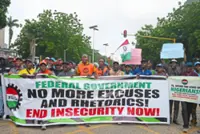Cranes working on the new extension of the Grand Mosque in Mecca. Saudi Arabia is pumping billions into the holy city to meet its ambitious economic targets. — AP
BILLBOARDS line the Umm Al Qura highway leading to the Grand Mosque in Mecca, displaying manicured public spaces, glass-fronted stores and sleek towers.
It’s part of a US$26bil (RM121.4bil) project to bring more Muslims to the holy city’s high-end hotels, residences, retailers and restaurants.
Already a subscriber? Log in
Save 30% OFF The Star Digital Access
Cancel anytime. Ad-free. Unlimited access with perks.





